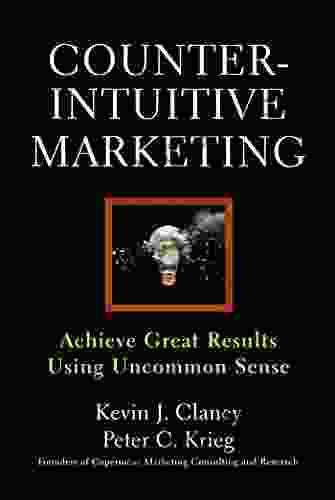Tackle Software Complexity With Domain Driven Design And Event Sourcing

As software systems grow in size and complexity, it can become increasingly difficult to understand and maintain them. This is especially true for distributed systems, which are composed of multiple independent components that interact with each other over a network.
4.7 out of 5
| Language | : | English |
| File size | : | 6187 KB |
| Text-to-Speech | : | Enabled |
| Screen Reader | : | Supported |
| Enhanced typesetting | : | Enabled |
| Print length | : | 421 pages |
Domain-driven design (DDD) and event sourcing are two powerful techniques that can help you to tackle software complexity. DDD helps you to model your software in a way that reflects the real-world domain that it operates in. Event sourcing helps you to record and replay the history of changes to your system, which can be invaluable for debugging and testing.
Domain-Driven Design
DDD is a software design approach that focuses on modeling the real-world domain that your software operates in. This means identifying the key entities and relationships in your domain, and then representing them in your software code.
There are many benefits to using DDD, including:
- Improved communication between business and technical teams. DDD provides a common language that can be used by both business and technical teams to discuss the system. This can help to reduce misunderstandings and improve collaboration.
- Reduced software complexity. DDD helps you to organize your software code in a way that reflects the real-world domain. This can make your code easier to understand and maintain.
- Increased flexibility. DDD makes it easier to change your software to meet new business requirements. This is because your software is already organized in a way that reflects the real-world domain.
Event Sourcing
Event sourcing is a data management technique that records and replays the history of changes to your system. This means that instead of storing the current state of your system in a database, you store a series of events that have occurred over time.
There are many benefits to using event sourcing, including:
- Improved debugging and testing. Event sourcing can help you to identify and fix bugs more quickly. This is because you can replay the history of events to see how the system got into its current state.
- Increased scalability. Event sourcing can help you to scale your system more easily. This is because you can replay the history of events on multiple servers.
- Improved resilience. Event sourcing can help to make your system more resilient to failures. This is because you can replay the history of events to recover your system from a failure.
Combining DDD and Event Sourcing
DDD and event sourcing are two complementary techniques that can be used together to create software that is more flexible, maintainable, and scalable. Here is a brief overview of how to combine these two techniques:
- Model your software using DDD. This will help you to identify the key entities and relationships in your domain.
- Create an event store. This is a database that will store the history of events that have occurred in your system.
- Record events whenever your system changes. This will ensure that the history of your system is always up to date.
- Replay events to rebuild your system. This can be used for debugging, testing, and scaling your system.
DDD and event sourcing are two powerful techniques that can help you to tackle software complexity. By combining these two techniques, you can create software that is more flexible, maintainable, and scalable.
4.7 out of 5
| Language | : | English |
| File size | : | 6187 KB |
| Text-to-Speech | : | Enabled |
| Screen Reader | : | Supported |
| Enhanced typesetting | : | Enabled |
| Print length | : | 421 pages |
Do you want to contribute by writing guest posts on this blog?
Please contact us and send us a resume of previous articles that you have written.
 Top Book
Top Book Novel
Novel Fiction
Fiction Nonfiction
Nonfiction Literature
Literature Paperback
Paperback Hardcover
Hardcover E-book
E-book Audiobook
Audiobook Bestseller
Bestseller Classic
Classic Mystery
Mystery Thriller
Thriller Romance
Romance Fantasy
Fantasy Science Fiction
Science Fiction Biography
Biography Memoir
Memoir Autobiography
Autobiography Poetry
Poetry Drama
Drama Historical Fiction
Historical Fiction Self-help
Self-help Young Adult
Young Adult Childrens Books
Childrens Books Graphic Novel
Graphic Novel Anthology
Anthology Series
Series Encyclopedia
Encyclopedia Reference
Reference Guidebook
Guidebook Textbook
Textbook Workbook
Workbook Journal
Journal Diary
Diary Manuscript
Manuscript Folio
Folio Pulp Fiction
Pulp Fiction Short Stories
Short Stories Fairy Tales
Fairy Tales Fables
Fables Mythology
Mythology Philosophy
Philosophy Religion
Religion Spirituality
Spirituality Essays
Essays Critique
Critique Commentary
Commentary Glossary
Glossary Bibliography
Bibliography Index
Index Table of Contents
Table of Contents Preface
Preface Introduction
Introduction Foreword
Foreword Afterword
Afterword Appendices
Appendices Annotations
Annotations Footnotes
Footnotes Epilogue
Epilogue Prologue
Prologue H P Albarelli Jr
H P Albarelli Jr Ruth Bader Ginsburg
Ruth Bader Ginsburg Jacques Futrelle
Jacques Futrelle Jim Rogers
Jim Rogers Lynne Rowe
Lynne Rowe Etgar Keret
Etgar Keret Gayle Mindes
Gayle Mindes Oliver Tearle
Oliver Tearle Brad Buhrow
Brad Buhrow Jay Heins
Jay Heins Jessie Donovan
Jessie Donovan Rebecca Thomas
Rebecca Thomas James Moore
James Moore Tea Rozman Clark
Tea Rozman Clark Max Gorman
Max Gorman Ann Bond
Ann Bond Aisha Urooj
Aisha Urooj Shelley Rigger
Shelley Rigger Johnp Galassi
Johnp Galassi Xqdesigns
Xqdesigns
Light bulbAdvertise smarter! Our strategic ad space ensures maximum exposure. Reserve your spot today!

 Kevin TurnerRevealing the Secrets Hidden in the Glass: An In-Depth Analysis of The Carter...
Kevin TurnerRevealing the Secrets Hidden in the Glass: An In-Depth Analysis of The Carter...
 Dan HendersonJikumi Martell Beigang: A Culinary and Cultural Gem in Tainan's Ancient City
Dan HendersonJikumi Martell Beigang: A Culinary and Cultural Gem in Tainan's Ancient City
 William GoldingEaster Basket Centerpiece Plastic Canvas Pattern: A Guide to Creating a...
William GoldingEaster Basket Centerpiece Plastic Canvas Pattern: A Guide to Creating a...
 David PetersonNavigating the Crossroads of Disruption: Fear and Opportunity in the Digital...
David PetersonNavigating the Crossroads of Disruption: Fear and Opportunity in the Digital... Justin BellFollow ·4.9k
Justin BellFollow ·4.9k Aubrey BlairFollow ·10.1k
Aubrey BlairFollow ·10.1k Alex ReedFollow ·16.6k
Alex ReedFollow ·16.6k Benji PowellFollow ·19.6k
Benji PowellFollow ·19.6k Foster HayesFollow ·7.7k
Foster HayesFollow ·7.7k Jerry HayesFollow ·17.6k
Jerry HayesFollow ·17.6k Kelly BlairFollow ·5.5k
Kelly BlairFollow ·5.5k Federico García LorcaFollow ·5.9k
Federico García LorcaFollow ·5.9k

 Christopher Woods
Christopher WoodsDeath's Second Chance: The Unbelievable Story of Cris...
On July 29, 2008, Cris...

 Esteban Cox
Esteban CoxFrom Ralphie Kids to Adolescents: The Journey to Manhood
The transition from...

 Chris Coleman
Chris ColemanLetters From Young Father Poems: Delving into the Heart...
Fatherhood, a journey filled...

 Holden Bell
Holden BellCounterintuitive Marketing: Achieving Great Results Using...
In the ever-evolving world of...
4.7 out of 5
| Language | : | English |
| File size | : | 6187 KB |
| Text-to-Speech | : | Enabled |
| Screen Reader | : | Supported |
| Enhanced typesetting | : | Enabled |
| Print length | : | 421 pages |








